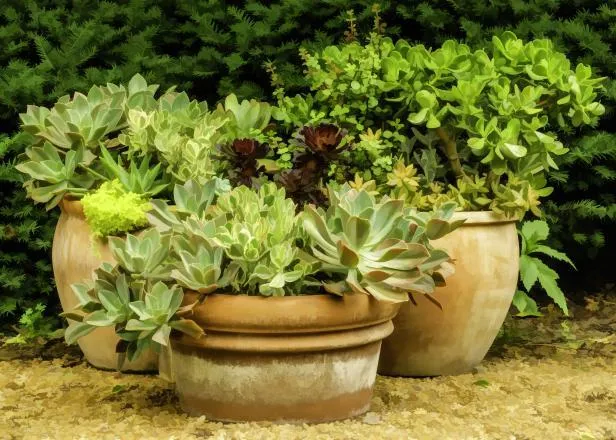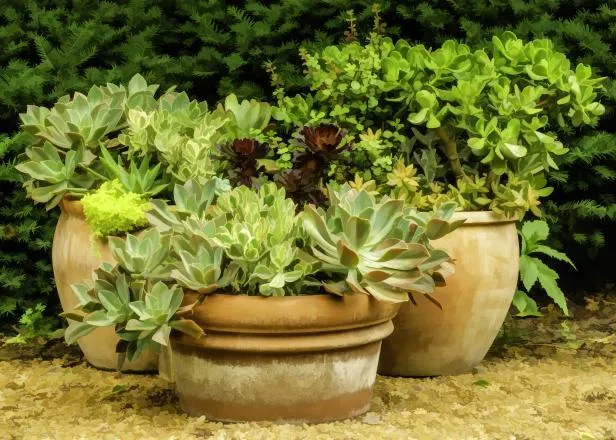Cascading Plants That Thrive in Full Sun: Your Ultimate Guide
If you’re looking to add some vertical interest and hanging appeal to a sunny spot in your garden, cascading plants are a great option. From my experience, these trailing beauties can really liven up areas that get full sun all day. In this guide, I’ll break down some of the best cascading plants for full sun and provide answers to all your questions about caring for them.
Cascading Plant Choices for Full Sun
There are quite a few cascading plant varieties that basically thrive when given lots of direct sunlight. Here are some top picks to consider:
- Petunias – Petunias are kind of a no-brainer choice for sun. They come in every color under the rainbow and will cascade beautifully over the sides of pots, walls, or rockeries. I’ve had good luck with the multiflora grandiflora type.
- Ivy geraniums – These beautiful trailing geraniums add lovely foliage and blooms. The leaves come in shades of green, bronze, and silver. Sort of low maintenance too!
- Trailing lobelia – The delicate flowers on lobelia cascade down in amazing blue, white, or purple hues. Trailing varieties will spill over containers gracefully.
- Creeping Jenny – With its cool, lime green foliage, Creeping Jenny makes a stunning groundcover. It fills in really densely and rapidly too.
- Nasturtiums – These edible trailing flowers come in yellows, oranges, and reds. The flowers and leaves are delicious in salads. The plants attract beneficial insects too.
- Sweet alyssum – Its tiny white blooms spread an amazing sweet scent on airy mats. Bees and butterflies adore it. Deadhead to prolong blooming!
Tips for Planting Cascading Plants in Full Sun
Now that you’ve got some plant ideas, here are a few tricks I’ve learned from experience about getting these beauties established in sunny spots:
- Prepare the soil well with compost or other organic matter. These trailing plants prefer rich, well-draining soil.
- Plant in containers at least 12 inches deep, or in the ground with superb drainage. Good airflow is key too to reduce chance of disease.
- Give adequate support for dangling growth. Espalier against a wall, trellis, or arrange hanging baskets on shepherd’s hooks from your deck railing.
- Space plants closer together for faster coverage. They’ll fill in and intertwine with one another before long.
- Water regularly when establishing and during heat waves. But be careful not to overwater, which can cause root rot issues in sun.
- Fertilize monthly with all-purpose plant food to promote lush growth. Seaweed-based ones are amazing, in my opinion.
- Prune as needed to shape plants and/or remove dead or diseased growth.
Ongoing Care Tips for Cascading Sun-Lovers
Once your trailing beauties are in place, ongoing care is pretty low maintenance. But here are a few tips I’ve learned to keep them looking their best:

- Water regularly when it doesn’t rain. But like I said, overwatering can harm them.
- Fertilize every 4-6 weeks in the growing season with a water-soluble plant food.
- Deadhead spent blooms to encourage repeat flowering, if applicable to the species.
- Check periodically for pests and take care of issues promptly before they spread. Like cabbage loopers on my petunias one time, ugh!
- Prune as needed to shape plants, remove disease, or rejuvenate older growth.
- Protect from excessively harsh sun, wind, or frost if plants are tender varieties the container won’t easily move indoors.
- Refresh mulch layers annually before summer to conserve moisture and suppress weeds.
If you follow these tips, your cascading sun lovers should reward you with vibrant color, fragrance, and visual interest all season long. Is that fair to say?
Dealing with Potential Pests or Diseases
For the most part, cascading plants adapted to full sun tend to be pretty resilient. However, sometimes they may face pest or disease issues that appear all of a sudden. Here’s what to look out for and how to handle:
- Aphids: Watch for tiny soft-bodied insects clustered on new growth. Knock them off with water or use insecticidal soap spray.
- Spider mites: You may see fine webbing on leaves and tiny red pests. Neem oil spray or insecticidal soap do the trick, in my experience.
- Powdery mildew: Fuzzy white spots on leaves signal this fungal disease. Prune affected growth and use sulfur-based fungicide or baking soda spray.
- Leaf spot: Dark lesions on foliage could be bacterial or fungal spots. Remove diseased leaves and spray copper fungicide as prevention.
- Slug damage: Look under pots at night for the slimy culprits. Use slug bait around plants or diatomaceous earth as a natural deterrent.
Catching issues early and taking prompt action usually does the trick. With any luck, your cascading beauties won’t face too many pest or disease woes in a sunny spot! But maybe I’ve just been fortunate so far, lol.
Additional Tips and Variations
While I’ve tried to cover the main aspects of caring for cascading plants meant for full sun situations, there are always unique circumstances and things to consider. Here are a couple more thoughts on the topic:

- Some species may need afternoon shade if in very hot climates. Like lobelia or coleus can scorch otherwise.
- Annual varieties provide fastcoverage but require replacement each year. Perennials return reliably with less effort.
- Try interplanting cascaders with full-sun pollinator plants or edible herbs for biodiversity.
- Experiment combining trailing species for colorful mixed containers or hanging baskets!
- Cascading plants make great groundcovers too. Sheet mulch or staggered spacing works well.
Overall, I hope this guide has helped answer your questions about growing cascading sun lovers. Lemme know if any part of caring for them still seems kinda unclear. I’m always down to chat plants more! Later days.
Cascading Plants for Full Sun Gardens
| Plant | Light Needs | Height | Spread | Flower Color |
|---|---|---|---|---|
| Petunia | Full sun | 6-12 inches | 12-18 inches | Purple, white, pink, red |
| Verbena | Full sun | 6-12 inches | 12-18 inches | Pink, purple, white, red |
| impatients | Partial to full shade | 6-12 inches | 12-18 inches | Pink, purple, white, red |
| Geranium | Full sun to partial shade | 6-12 inches | 12-18 inches | Pink, purple, white, red, orange |
| Violas | Partial to full shade | 4-8 inches | 8-12 inches | Pink, purple, white, yellow |
FAQ
-
What sorts of cascading plants thrive in full sun?
Some cascading plants that do well in lots of sunshine are ivy, nasturtiums, snapdragons and petunias. Ivy and nasturtiums are pretty tough and can handle hot sunlight all day. Snapdragons and petunias may need a bit of shade in the hottest parts of the afternoon.
-
Do all cascading plants need full sun to grow properly?
Not necessarily. While many cascading plants basically prefer sun, some will do okay in partial shade. English ivy is one that can get by with only part of the day in the sun. Some hanging baskets with shade lovers like impatiens and begonias will do fine as long as they get a few hours of light each day. At the same time, too much shade and cascading plants won’t look their best.
-
What if a cascading plant starts to look wilted in the afternoon sun?
If a cascading plant appears to be getting burned in the hottest sun, it’s likely it needs a bit of midday protection. You can provide relief by putting up an awning above the area or moving the plant to a spot that gets morning sun but is shaded in the afternoon. An easy way is fastening pieces of old tree shade to a wire cage above the container. Check it each day – some plants may need the extra coverage while others will toughen up in time.

-
How do I know if a spot has enough sun for cascading plants?
To be sure an area receives full sun, take notice of how long the spot is lit each day. Cascading plants as a whole like at minimum six hours or more of direct rays. If trees or buildings block light for part of the day, it may be light shade. Another way is observing plants already growing in the area – if they look sparse and stretched out it’s not enough sun. On the other hand, thriving plants signals lots of light. You could also download a sun chart app to confirm sun hours at different spots.
-
What can I do if some cascading plants don’t seem to be thriving?
There could be few reasons a cascading plant is not doing well. First check that it’s getting sufficient sun as we discussed. Beyond that, look at watering and drainage. Over- or under-watering can weaken a plant. Poor drainage causes roots to drown. Pests or disease are possible too – check leaves for damage. As a last resort, replacing the plant with something hardier may be best. Sometimes certain kinds just don’t enjoy our conditions no matter what.
-
Are there any cascading plant alternatives that don’t need full sun?
For spots with less sun, impatiens, begonias, ferns or shade coleus work great in hanging pots and baskets. You could basically fill a container with shade lovers and still get the dripping down effect without worry over sun hours. Moss roses, licorice vines and English ivy cascades also adapt well to light shade. So if you find a nice spot that’s a bit shady, don’t count out alternatives – plenty look awesome without full sun exposure.
-
Do cascading plants in heavy shade tend to get leggy?
You got it – cascading plants struggling to get enough sun often grow long and sparse trying to reach rays. This legginess is an issue with shade since it spoils the flowing look. Some sunlight is basically essential for compact, bushy growth. Even partial sun helps prevent plants from stretching excessively toward available light. So if shade is unavoidable consider supplementing with a grow light orb to keep foliage fuller without lanky stems spoiling the aesthetic.

